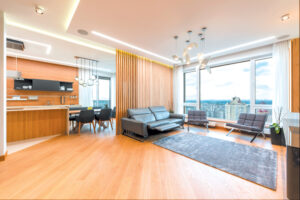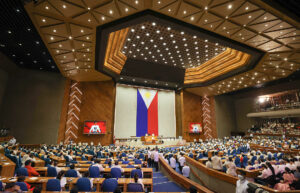Throughout history, real estate has not merely been a matter of providing shelter but also of embodying status and taste. As societies evolved, so too did the concept of luxury in real estate, setting some properties distinctly apart from the rest.
Luxury real estate is defined differently across different markets, as property values, median resident income, and area development varies. According to reports, global high-end real estate is generally priced in the top 5%-10% of properties in the market.
The term ‘luxury’ in real estate is not just a marketing gimmick. It is an embodiment of a lifestyle choice. While it is easy to assume that any property with a hefty price might qualify as luxurious, the subtle reality delves deeper into qualitative attributes rather than quantitative measures.
Prime location
Real estate professionals have often emphasized location regarding property value. While properties might boast state-of-the-art amenities and lavish designs, their location often sets them apart as an actual luxury asset.
Prime property is defined as the most desirable and expensive real estate in a given location, generally defined as the top 5% of each market by value. According to a report from real estate consultancy Knight Frank, Manila is one of the hottest luxury home markets in the world, beating out other major cities such as Boston, Paris, and Tokyo.
Consequently, the integration of the Philippines into global capital flows and the rise of a powerful real estate sector together have led to a proliferation of exclusive and exceptional spaces, based on a study published in Critical Sociology.
Luxury real estate is often located in areas with easy access to high-end amenities such as shopping malls, restaurants, and entertainment centers. Luxury real estate buyers value the convenience and proximity to these amenities as part of the luxury lifestyle they seek.
Exclusivity and privacy
Exclusivity often translates to greater privacy. Luxury real estate buyers gravitate towards properties that offer seclusion from the outside world. According to the “YouGov Affluent Perspective Report,” 61% of surveyed prioritize privacy when selecting a property, making exclusivity a top criterion.
Privacy and exclusivity are defining factors in high-end and luxury real estate in the Philippines. Luxury homes are often designed with spacious interiors and outdoor areas that provide residents with a sense of seclusion and exclusivity. Hence, gated communities and exclusive neighborhoods with restricted access and security measures create a sense of prestige and privacy for investors and residents.
Amenities redefined
While location has long been a defining factor in property valuation, amenities have emerged as equally significant in setting luxury homes apart from the mainstream. High-end homes offer more than just a space to live as they also provide distinct experiences to residents.
The COVID-19 pandemic further underscored the importance of amenities as they addressed a newfound emphasis on space and wellness. Hence, luxury properties offering swimming pools, movie theaters, fitness centers, meditation zones, or air purification systems gained heightened significance.
While amenities add to the living experience, they also significantly influence the property’s investment value. Luxury amenities help draw in affluent tenants and buyers who are willing to pay a premium for upscale living experiences. According to a study published by the journal Land in 2022, the range of amenities is valued by both households and firms, resulting in higher housing and industrial prices. As such, homes equipped with modern facilities, energy-efficient systems, and unique features become more attractive to potential high-end buyers.
The architecture of distinction
At the heart of every luxury property lies its unique identity, and architecture is often the most pronounced expression of this individuality. Good architecture and quality design have been shown to increase surrounding property values and create a sense of prestige and exclusivity, based on a study published by the Massachusetts Institute of Technology.
Luxury properties often aim to seamlessly blend with their natural surroundings or create a unique environment. Thus, well-designed architecture considers the functionality and practicality of properties, featuring thoughtful layouts, efficient use of space, and high-end amenities.
Beyond the price tag
The increasing number of high-net-worth individuals in Metro Manila is driving the demand for luxury properties that provide exclusivity and a luxurious lifestyle. According to the 2019 Knight Frank’s Prime International Residential Index, Metro Manila has witnessed a significant increase in luxury home prices, with a growth rate of 11.1% year over year in 2018, making it the fastest-growing luxury market in the world.
While the prices of luxury homes are certainly driven by their size and location, the essence of their value lies far beyond mere numbers. The presence of luxury homes can contribute to the stability of the real estate market. Luxury properties often have higher price points and tend to hold their value well, even during economic downturns.
Furthermore, the demand for luxury properties in Metro Manila is pushed by the growing number of foreign investors attracted to the country’s economic growth. Consequently, the luxury real estate market in Metro Manila is expected to continue growing in the coming years. — Mhicole A. Moral






